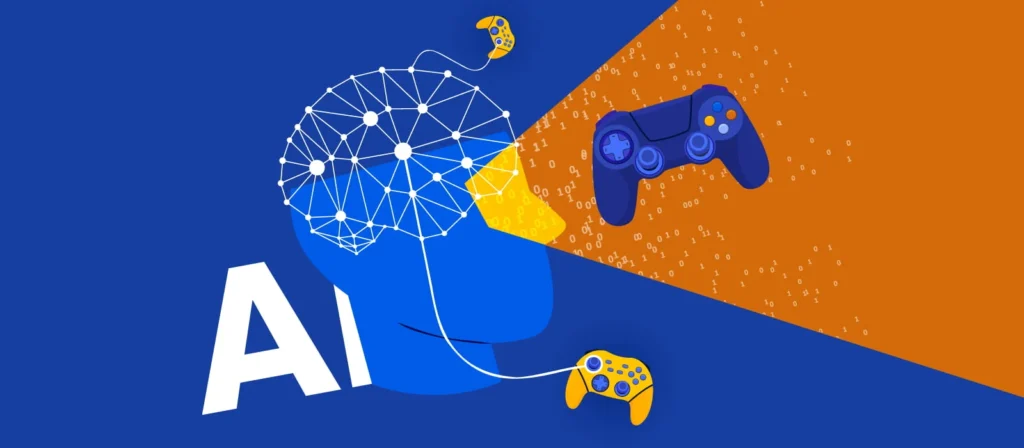The Role of AI in Modern Video Games is becoming increasingly significant as developers look for ways to enhance the player experience. AI, or artificial intelligence, plays a crucial role in creating realistic and challenging non-player characters (NPCs), as well as in generating dynamic and adaptive environments within the game world. By utilizing advanced algorithms and machine learning techniques, AI in modern video games can provide players with more immersive and engaging gameplay experiences. Additionally, AI can also be used to personalize the gaming experience for individual players, creating unique and tailored challenges based on their behavior and preferences.
In the realm of modern video games, the use of AI has sparked curiosity and interest in how it can revolutionize the gaming industry. The implementation of intelligent NPCs and enemies, procedural generation of game content, and adaptive difficulty systems are just a few examples of how AI is reshaping the gaming landscape. Moreover, the potential for AI to create more immersive virtual worlds and enhance storytelling through dynamic character behaviors has captivated the attention of both developers and gamers alike. As technology continues to advance, the role of AI in modern video games is expected to evolve and expand, offering new possibilities for more lifelike and compelling gaming experiences.
The Evolution of AI in Video Games
Artificial Intelligence (AI) in video games has come a long way since its inception. In the early days of gaming, AI was limited to simple routines and scripted behaviors, making the game predictable and repetitive. However, with advancements in technology, AI in video games has evolved to become more sophisticated and adaptive. Modern AI can now learn from player behavior, make strategic decisions, and even mimic human-like responses, providing a more immersive and challenging gaming experience.
The evolution of AI in video games has also led to the development of non-player characters (NPCs) that are more lifelike and dynamic. These NPCs can exhibit complex behaviors, interact with the game environment, and respond to the player’s actions in a realistic manner. As a result, AI has become an integral part of modern video games, enhancing the overall gameplay and creating more engaging virtual worlds for players to explore.
AI-Driven Procedural Content Generation
AI-driven procedural content generation has revolutionized the way video game environments are created. Instead of relying on manual design and placement of game elements, developers can now use AI algorithms to automatically generate vast and diverse game worlds. This not only saves time and resources but also allows for the creation of dynamic, ever-changing environments that adapt to the player’s actions.
AI-driven procedural content generation also enables the creation of personalized experiences for each player, as the game world can be dynamically generated based on individual preferences and playstyles. This technology has been particularly impactful in open-world games, where the sheer size and complexity of the game world would be unfeasible to design manually. Overall, AI-driven procedural content generation has significantly expanded the possibilities of game design and has contributed to the creation of more immersive and expansive virtual worlds.
Enhanced Enemy AI and Adaptive Difficulty
One of the key roles of AI in modern video games is to power enhanced enemy AI and adaptive difficulty systems. Instead of relying on static difficulty settings, AI algorithms can dynamically adjust the challenge level based on the player’s skill and performance. This not only ensures that the game remains engaging for players of all skill levels but also provides a more customized and rewarding experience.
Enhanced enemy AI, powered by advanced AI algorithms, allows enemies to react intelligently to the player’s actions, coordinate attacks, and adapt their strategies in real-time. This creates more intense and unpredictable combat scenarios, forcing players to think strategically and adapt to ever-changing situations. As a result, AI-driven adaptive difficulty and enhanced enemy AI have become essential components of modern video games, elevating the overall gameplay experience.
AI-Powered Procedural Animation and Character Behavior
AI has also played a significant role in the development of procedural animation and character behavior in video games. Instead of relying on pre-canned animations, AI algorithms can generate lifelike and responsive character movements based on environmental interactions and player input. This not only creates more realistic and immersive gameplay experiences but also reduces the need for manual animation work, saving time and resources for game developers.
Furthermore, AI-powered procedural animation enables characters to exhibit more natural and dynamic behaviors, such as reacting to changes in the game environment, displaying emotions, and interacting with other characters in a more lifelike manner. This has contributed to the creation of more believable and emotionally engaging narratives in video games, enhancing the overall storytelling and player immersion.
AI-Driven Player Behavior Analysis and Personalization
AI-driven player behavior analysis and personalization have become increasingly prevalent in modern video games. By analyzing player data and interactions, AI algorithms can gain insights into individual playstyles, preferences, and skill levels. This information can then be used to personalize the game experience, such as recommending content, adjusting difficulty, or creating tailored challenges and quests for each player.
This level of personalization not only enhances player engagement and satisfaction but also allows game developers to continuously adapt and improve the game based on real-time player feedback. AI-driven player behavior analysis has become a powerful tool for creating more player-centric experiences and has significantly contributed to the longevity and replayability of modern video games.
AI-Assisted Game Testing and Quality Assurance
AI technology has also been instrumental in streamlining game testing and quality assurance processes. AI algorithms can be used to automate testing procedures, identify bugs and glitches, and optimize game performance. This not only saves time and resources for game developers but also helps ensure a more polished and stable gaming experience for players.
Additionally, AI-assisted game testing can simulate a wide range of player behaviors and scenarios, uncovering potential issues that may not be apparent through traditional testing methods. By leveraging AI technology, game developers can deliver higher-quality games with fewer technical issues, ultimately enhancing the overall satisfaction of players.
AI-Generated Dynamic Game Adaptations
AI-generated dynamic game adaptations have introduced new levels of unpredictability and replay value to modern video games. AI algorithms can dynamically alter game elements, such as level designs, enemy placements, and environmental conditions, to create unique and evolving gameplay experiences for each playthrough. This not only adds variety and freshness to the game but also encourages players to experiment and adapt to ever-changing challenges.
Furthermore, AI-generated dynamic game adaptations can create a sense of discovery and exploration, as players never know what to expect in each playthrough. This technology has been particularly impactful in roguelike and procedural generation-based games, where the element of surprise and adaptability is crucial to the core gameplay experience. Overall, AI-generated dynamic game adaptations have expanded the possibilities of procedural content generation and have contributed to the creation of more engaging and replayable video games.
The Ethical and Social Implications of AI in Video Games
The increasing integration of AI in video games has raised important ethical and social considerations. As AI algorithms become more sophisticated in mimicking human-like behaviors, there is a growing concern over the potential impact on player psychology and well-being. Game developers and researchers are faced with the responsibility of ensuring that AI-driven experiences are designed with the player’s best interests in mind, avoiding potential negative effects such as addiction or psychological manipulation.
Additionally, the use of AI in video games raises questions about data privacy, as player behavior and interactions are often collected and analyzed to personalize the game experience. It is important for game developers to prioritize transparency and consent in the collection and use of player data, as well as to implement robust security measures to protect sensitive information. Furthermore, the ethical implications of AI-driven content generation and storytelling, such as the potential for biased or harmful representations, require careful consideration and responsible development practices.
| AI in Video Games | Description |
|---|---|
| 1. Non-Player Characters (NPCs) | AI controls the behavior and decision-making of NPCs, creating more realistic and challenging gameplay. |
| 2. Procedural Content Generation | AI algorithms are used to generate game content such as levels, maps, and missions, providing endless possibilities for players. |
| 3. Adaptive Difficulty | AI adjusts the game difficulty based on player performance, ensuring an optimal level of challenge for each player. |
| 4. Player Behavior Analysis | AI analyzes player actions and preferences to personalize the game experience and offer tailored recommendations. |
| 5. Realistic Opponent Behavior | AI simulates human-like behavior in opponents, making multiplayer and single-player games more engaging and unpredictable. |



